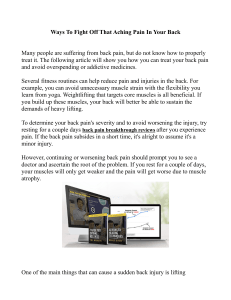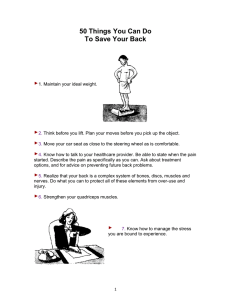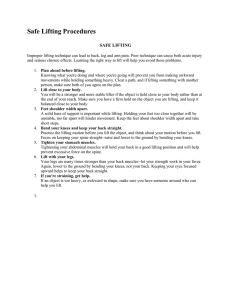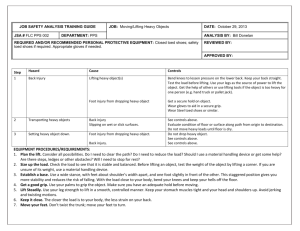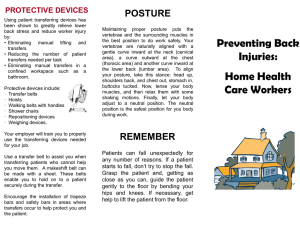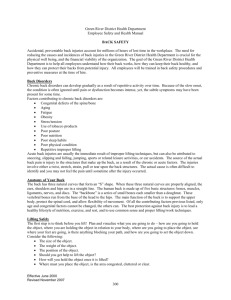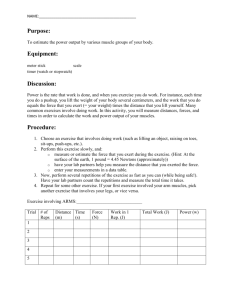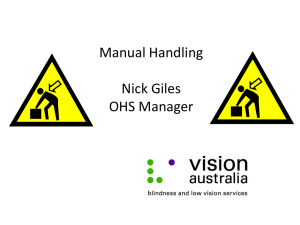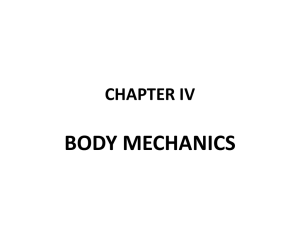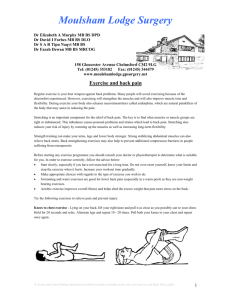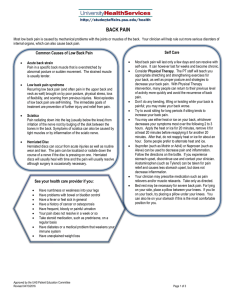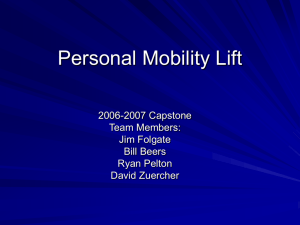Exercise Back Safety | Safe Lifting EXERCISE #2 Target Audience
advertisement
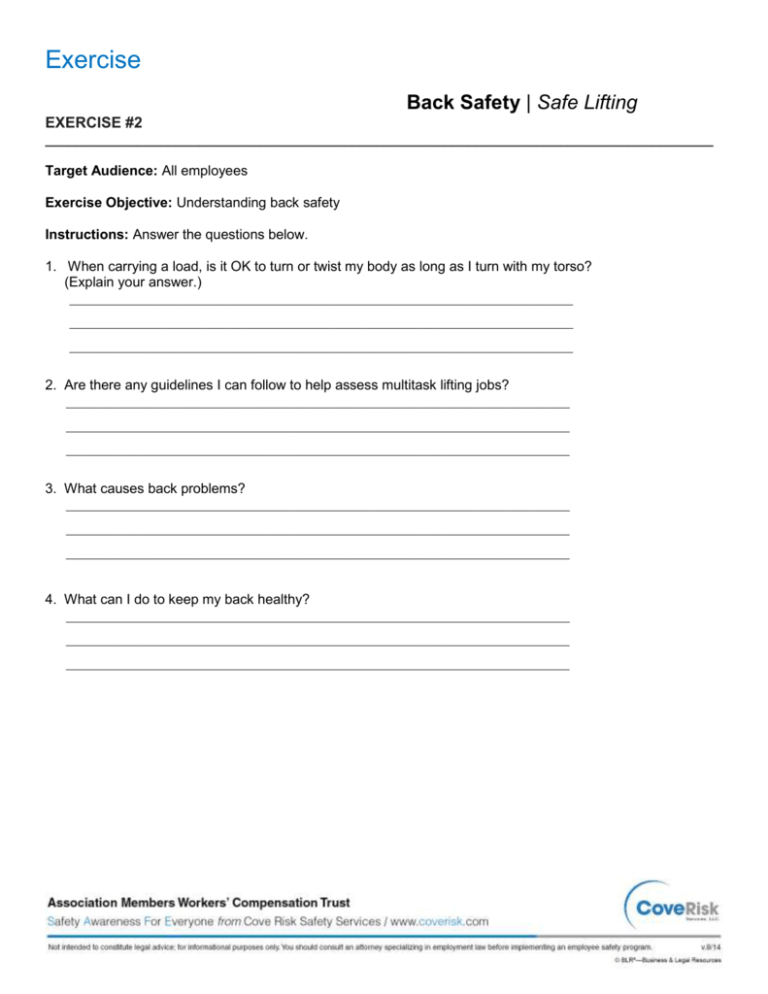
Exercise Back Safety | Safe Lifting EXERCISE #2 _______________________________________________________________________________________ Target Audience: All employees Exercise Objective: Understanding back safety Instructions: Answer the questions below. 1. When carrying a load, is it OK to turn or twist my body as long as I turn with my torso? (Explain your answer.) _________________________________________________________________________ _________________________________________________________________________ _________________________________________________________________________ 2. Are there any guidelines I can follow to help assess multitask lifting jobs? _________________________________________________________________________ _________________________________________________________________________ _________________________________________________________________________ 3. What causes back problems? _________________________________________________________________________ _________________________________________________________________________ _________________________________________________________________________ 4. What can I do to keep my back healthy? _________________________________________________________________________ _________________________________________________________________________ _________________________________________________________________________ Exercise Back Safety | Safe Lifting ANSWERS __________________________________________________________________________________ 1. No. You should try to minimize any turning or twisting, but if you must turn while carrying the load, turn using your feet. 2. Yes. To help in the evaluation process, refer to the Applications Manual for the Revised NIOSH Lifting Equation (http://www.cdc.gov/niosh/94-110.html). 3. A number of actions, identified below, can cause back pain. Poor physical condition —Your overall physical condition can affect your back. If your back muscles are weak, or if you have put on a few pounds, your back must work harder. Making your back work harder can lead to back pain. Poor posture —Standing, sitting, or lying down incorrectly will put strain on your spine. Your spine is designed to operate best when it is in a “natural S” shape. Aging —As we age, the muscles in our backs lose their strength and ability to function. Tension and stress —Tight and knotted muscles, which are caused by tension and stress, can cause muscle spasms and back pain. 4. You can do a lot to keep your back healthy. Exercise to strengthen your back and reduce stress—Having strong back and stomach muscles is important in order to ease the work your back is put through each day. Check with your doctor as to the best exercises for you. Lose excess weight—Excess weight exerts extra force on back and stomach muscles. By losing weight, you can reduce strain and pain in your back. Check with your doctor for the most sensible diet plan for you. Maintain good posture—You can prevent many back injuries by learning to sit, stand, and lift items correctly. The best way to sit is straight, with your back against the back of the chair with your feet flat on the floor and your knees slightly higher than your hips. Learn to stand tall, with your head up and shoulders back. Exercise Back Safety | Safe Lifting ANSWERS (continued) __________________________________________________________________________________ Plan your lift—Many people perform their lifts incorrectly, resulting in unnecessary strain on their backs and surrounding muscles. Planning your lift means you should think about the weight of the object you will be moving and the distance you will be moving it. Position yourself correctly in front of the load—Slowly squat by bending your knees, not your back and stomach. Keep the load as close to your body as you can. This will help distribute the weight of the load over your feet and make the move easier. Lift with your legs, not your back—Once the load is close to your body, slowly straighten your legs until you are standing upright. Make sure the load isn’t blocking your vision as you begin to walk slowly to your destination. Set loads down correctly—By reversing the above lifting procedures you can reduce the strain on your back and stomach muscles. If you set your load on the ground, squat by bending your knees and position the load in front of you. Get help, if needed—If the load is too heavy, bulky, or awkward for you to lift alone, find a friend to help you carry it. Look for simple solutions to help make the move easier on you and your back.
